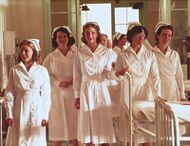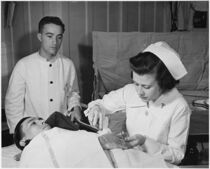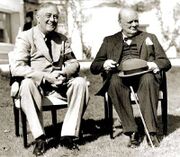Pearl Harbor
“A screenplay which will live in infamy!”
Pearl Harbor was one of many battles of World War II that were patterned after award-winning films. However, critics were dissatisfied by the real events, stating that they strayed too far from the original plot of the film. The film itself received five stars from all reviewers and won nine Oscars.

The film[edit]
Pearl Harbor is the first in a series of films that inspired World War II and stars some of the giants of American cinema, such as Ben Affleck. The mastermind credited with dreaming up the work of fiction was Michael Bay, known for his delicate approach to sensitive material — and his phobia of the cheeses of Southern France. Michael Bay went on to direct Transformers, a docudrama about the life of butterflies, which was a box office bomb due to its short length and intellectual plot.
Michael Bay was praised for Pearl Harbor's clever fusion of romantic comedy and war movie. Bay ignored the horrors of war, which would have detracted from the main events of 1941: the romance between two yokels and a slutty nurse. Other war films such as Saving Private Ryan and Black Hawk Down have been criticized for their disregard for the important role that sex plays in combat.
The battle[edit]
The dramatic attack on the island of Oahu, unfortunately, was a hollow rendition of the popular movie. For one thing, from most of our records of the attack, it was conducted in black-and-white, whereas the movie was in brilliant Technicolor®.
The United States, at the time, was entering the second decade of a grand experiment in which the President set prices, directed the economy, and ordered Americans to remain unemployed. There was no time, after filling out required forms and standing in soup lines, to enter the war in Europe. An attack on a naval base, in a place that was not yet even a U.S. state, was annoying but insignificant.
Nevertheless, Admiral Isoroku Yamamoto was a movie buff and Pearl Harbor had been his all-time favorite. He had it on DVD and watched it again and again, with his miniature dogs, Tora, Tora, and Tora, on his lap. In retrospect, it was inevitable that he would launch a copycat surprise attack on the American naval base at Pearl Harbor. However, due to a low budget, his re-creation was poorly staged. Instead of the planes, submarines and ships that appear in the film, his troops attacked from the ground, with foam fingers and sharpened breadsticks. On the American side, the soldiers were, sadly, too busy trying not to die to put serious moves on any nurses. Both sides were left with a deep sense of disappointment. Follow up film-inspired battles, such as The Battle of Britain and Guadalcanal, were much more successful (unless you were German or Japanese).
Conspiracy?[edit]
It has long been charged that FDR had advance knowledge of the attack on Pearl Harbor and cynically allowed Americans to enter the war. For example, he and wife Eleanor sat through three entire showings of the movie at the White House well aware of Yamamoto's love for the film. Moreover, after the war, a Congressional commission found evidence that FDR and Yamamoto had compared notes on BanzaiBlog. Indeed, a blog reply from user "Akira7" even discussed with Yamamoto ways in which the movie attack could be more realistic "if I were directing it".
Republican Senator Joseph McCarthy claimed in a speech that "I have here in my hand" an entire chat transcript to prove that Akira7 was really FDR using a fake name — Yamamoto had conned him into inaction during the attack on the pretense of filming a sequel. McCarthy was never able to prove his sensational charge but, in 2010, Glenn Beck reopened the case in his television series FDR: Lenin in the White House.


